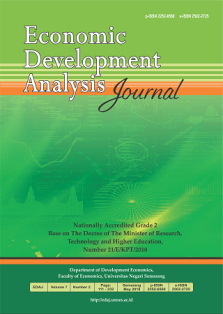Estimation and Analysis of Food Demand Patterns in North Kalimantan
Abstract
North Kalimantan Province is in the top five provinces with Indonesia's highest percentage of food-insecure populations in 2018. Meanwhile, of the five provinces, only North Kalimantan Province has the status of a newly expanded province. As a province that is still relatively new, this is a challenge for the local government to ensure the availability of food for its people. Therefore, this research aims to analyze the factors that influence patterns and changes in food consumption due to prices, income, and socio-demographic characteristics of households in North Kalimantan Province. This study uses A Linear Approximated Almost Ideal Demand System (LA/AIDS) for 13 food commodity groups using Susenas data in 2018. The results show that the prices of each commodity group and other commodities significantly influence the proportion of food expenditure. In addition, the number of household members, household residences, and head of household education substantially affects the pattern of household food consumption. Price elasticity provides a positive value for 11 commodity groups, and only two commodities are negative, namely vegetables and fruits, while cross elasticity is quite varied. The policy implications that the government can carry out are to ensure food availability by using this research information to create work programs and strategic policies to ensure the fulfillment of food needs


